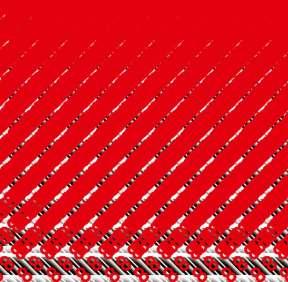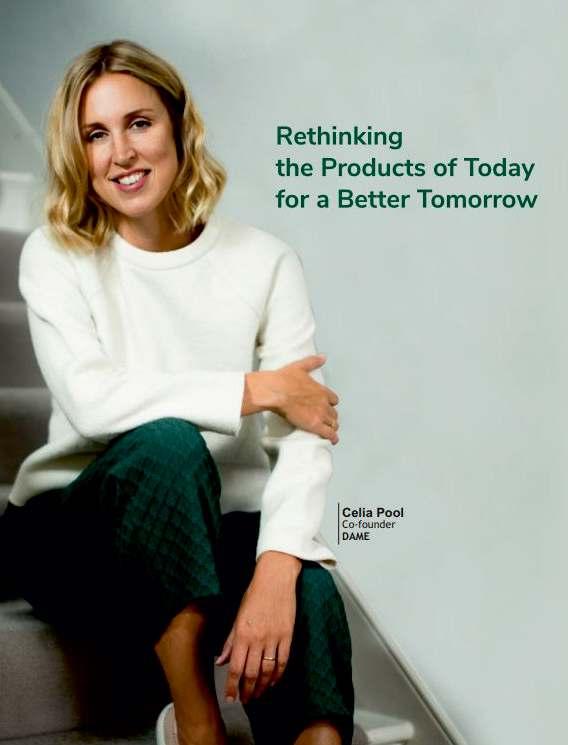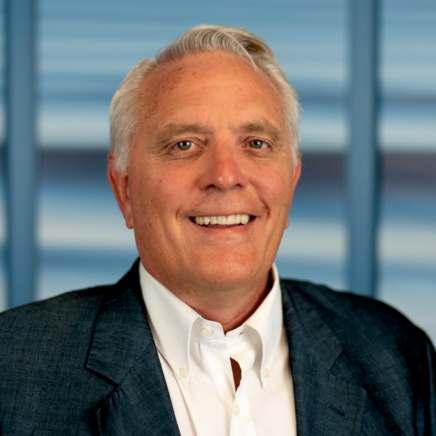

















Powerful women have the strength to take risks, learn from
failure, deal with remarks, insults or stereotypes, and the courage to fight for what they believe in and never to give up, no matter how hard a challenge is. Being a staunch woman leader in a male-centric business world requires the strength and confidence to deal with every obstacle or setback.
The business world is a highly unpredictable and stressful environment. Female leaders need to understand the fact that there is nothing within the biological gender that makes them less patient or less suitable for unpredictability. It's all up to specific individuals and their ability to learn and reach their goals despite the uncertainty around them.
Woman leader leaders possess the same traits as their male counterparts: vision, perseverance, empathy, passion, etc. But one thing that next-generation female leaders need to have is truly at the forefront of creating women-empowered workplaces. While some policies have changed over time to develop gender-equal workplaces, most have not been revamped to keep up with the times.
All leaders, need to be confident, creative, and persevering, but above all else, they need to be adaptable. Every work environment and job position will have a unique set of demands, and those demands will continue to evolve as the technology, workforce, and clients' needs do. Grit is the perseverance and passion for achieving long-term goals. Today's business world is filled with uncertainty. And uncertainty creates distractions, stress, and obstacles. Having the "grittiness" to thrive in the face of adversity is necessary to be successful long-term.


Spotlighting the journey of the starlets that are enabling innovations in the mining industry, CIOLook features some of the enthralling stories in its latest edition, ' The 10 Most Influential Women Leaders in Mining 2022 .' Flip through the pages and indulge in the journey of novel approaches that are transforming the crucial aspects with resilient leadership acumen.




Senior Editor Alan Swann Executive Editors Abhishek Joshi DESIGN Visualizer Dave Bates
Art & Design Director Revati Badkas Associate Designer Sandeep Tikode SALES
Vice President Operations Kshitij S. Senior Sales Manager Prathamesh Tate Sales Executives Rohit, John TECHNICAL Technical Head Amar Sawant Technical Consultant Victor Collins
FOLLOW US ON www.facebook.com/ciolook www.twitter.com/ciolook
WE ARE ALSO AVAILABLE ON
CONTACT US ON
Email info@ciolook.com For Subscription www.ciolook.com
Copyright © 2022 CIOLOOK, All rights reserved. The content and images used in this magazine should not be reproduced or transmitted in any form or by any means, electronic, mechanical, photocopying, recording or otherwise, without prior permission from CIOLOOK. Reprint rights remain solely with CIOLOOK.
Shellie JonesAlexandra Almenara CEO
Mining Peru traling.com
Ana Milena Vasquez CEO
Collective Mining collectivemining.com
DAME dame.com Celia Pool Co-founder
Jennifer Barnes Chief Executive Officer
Juan Carlos Giron CEO
Laura Tyler CEO
Marilyn Spink Head Of Project System
Natascha Viljoen Owner
Optima Office optimaoffice.com
Environmental Global envirogoldglobal.com
Alexandra is the Vice President of Sustainability and brings over 18 years of experience in various corporate leadership, consulting, operations and business development positions within the mining, energy, and gas industries internationally.
Ms. Vásquez has extensive Colombian experience in mining, community and government affairs.
DAME make sustainable period products with the belief that women and the planet deserve better.
Optima Office provides Outsourced Accounting, Fractional CFO and COO services along with Human Resources Support.
Juan Carlos is a strategy & finance professional with over 12yrs of experience in finance, management, and strategic development.
BHP bhp.com
Ausenco ausenco.ca
Anglo American Platinum angloamerican.com
Tania Tchedaeva Director
Polymetal International Plc polymetalinternational.com
Laura is responsible for the Company’s minerals exploration, centers of excellence, technology, and innovation portfolios, which provide the engine to accelerate BHP’s growth of sustainable value.
Marilyn Spink is an award-winning professional engineer and expert in metallurgical & mining processes, having spent over 25 years managing the delivery of complex mine development projects throughout the world.
Natascha holds 28 years of operational experience from across the mining industry, spanning many different countries, metals and minerals including, of course, the PGMs.
Under Tania's leadership, Polymetal continued to deliver on its strategy of building the long-term future of the Company while generating significant free cash flow and creating value for its stakeholders.


We contribute to the knowledge base and research about the complex challenges faced by minerals & metals, oil & gas and industrial sectors.
“ “

 Marilyn Spink, P.Eng. Head of Project Systems, Global Projects Ausenco
Marilyn Spink, P.Eng. Head of Project Systems, Global Projects Ausenco


Marilyn Spink, P.Eng. is an award-winning professional engineer and expert in metallurgical & mining processes, having spent over 25 years managing the delivery of complex mine development projects worldwide. Today, she lends her considerable know-how to Ausenco as a Head of Project Systems, Global Projects. As the principal business partner, she heads an integrated team striving towards the implementation and continuous improvement of digital engineering delivery systems by leveraging a suite of project management and engineering design applications, including creating critical data interfaces with quality management & corporate ERP systems for enhanced and efficient project delivery.
Ausenco's diverse group of global experts is dedicated to adding value to projects & redefining what's possible. It is a company that provides services across the full project lifecycle, from preliminary feasibility studies to the construction of multi-billion-dollar projects and ongoing management, maintenance, and optimization. Marilyn is also an ardent advocate and inspirational role model for women in engineering. She is a progressive leader who aims to take her company to the next level.
Marilyn Spink's non-traditional perspective on engineering goes beyond the obvious challenges for a female engineer – building a successful career in what has traditionally been a male-dominated fieldengineering & mining! It's also that she sees it as a creative endeavour . "Engineering is building things, right?" Spink says simply.
She began her journey with that need to build and then thrived on her ability to see the art and creativity engineering can express. "I did a lot of pottery when I was younger and always loved the high-temperature chemistry," Spink explains. " So, I went into metallurgy and worked in the steel industry." That early experience allowed her to see a higher purpose for the technical work engineers performed and the creativity they brought to the process. "I ended up getting bitten by the capital project bug," Spink explains. "It was my first experience with how projects and engineering can do social good."
In one of her early projects, Spink helped create one of the first steel plants in Kentucky's declining tobacco

belt, bringing much-needed employment to a struggling region. Mini mills recycling old automobiles brought the industry to the area and purpose to the community. Her tenure left long-term effects on the plant. "I saw what engineering can do to shift a community," she remembers. "That community is prospering now because there's a thriving steel industry there. We were just the first." , she adds.
Maintaining the balance between mineral extraction and protecting the environment
Moving into mining and mineral projects for most of her career, Spink was able to see this effect around the world, working on projects in Madagascar and Tunisia "People say we had some part in the Arab Spring," she jokes, referring to a project that modernized the Tunisian state-owned steel plant. " Because the plant was modernized, it was making more money, and hiring more people. Those people could buy cell phones. When you educate and elevate people, they can rise against injustice."
Creativity, in her view, is what will help mining thrive in a world that is increasingly aware of sustainability issues and the environment. "If society is going to move toward a lower carbon or net-zero economy, critical minerals will allow us to do this," she says. "You can address a lot of the UN's sustainability goals with mine design, and how you develop a project." She believes that creative thinking is the key. "Mining is not an either/or," Spink insists, referring to the perceived trade-off many people see between mineral extraction and protecting the environment. "It's an and."
Now Head of Global Project Systems, her focus is on shifting Ausenco to an advanced digital platform and adopting what she calls a "systems thinking mentality" for project delivery. Linear thinking keeps knowledge siloed and sequestered and often pushes problems into other areas. A systems thinking mindset sees everyone involved in a project collaborating more openly, with more centralized information. "Engineering and design are really about using imprecise information to make the best decisions at the time." If different groups are working independently with their own information sources, progress is disjointed . "A systems approach is about having one piece of information in one location, so it's a single source of truth."
Mineral and mining projects are inherently iterative in their design and execution. With centralized, shared information, the efficiency of each iterative stage
improves. "It is said that 70% of an engineer or designer's time is spent looking for the information they need to do their work. If you could cut that time in half, it would be better for everybody." At Ausenco, that commitment to teamwork and collaboration is tangible. For Spink, it was one of the first times she's seen a company living its values.

Spink says, "We delight our clients," "Our diverse clients are delighted by different things." She's proud of the continuing focus on values – a "Values Moment" starts every single meeting, for example – and a healthy degree of open and honest collaboration among diverse team members . "There's a sense of community embedded in what we do."
That collaboration plays straight into her approach . “I'm a horizontal connector," she explains. "I say I'm a basket weaver because, from all these vertical silos, I connect people together, which strengthens the basket. Creating the opportunity for folks who ordinarily don't work together makes us all stronger! Especially with a global company across different time zones, cultures, and language barriers."
As society awakens to the need for critical minerals, Spink sees an opportunity to focus less on value extraction and more on value creation. Ideal clients are less interested in the quick sale of an asset and more in delivering long-term projects that build communities, educate and train workers, and protect the environment they live in.

"Spinning a new idea is way easier than having to make it real," she points out. " We're poised to bridge the gap between studies and project delivery, all within a sustainability mindset. We're only limited by our imagination." Her goal now is to work with early-career engineers as a mentor to facilitate knowledge transfer with a focus on creativity and design thinking.
Spink's advice is simple and strongly influenced by her systems approach. "Learn from the mistakes of others, don't make the same ones but make new mistakes. Understand what your purpose is. Live your values and surround yourself with people who share those values and who complement your knowledge gaps."
"It's a team. It's zone coverage."



















TThe importance of quality is a topic usually stressed in the context of building customer loyalty and in relation to the pricing of products. Quality is just as important to the success of Robotic Process Automation (RPA) programs.
From its early days Blue Prism, an industry pioneering RPA technology provider, recognized the need to build quality automations to optimize benefits. Blue Prism continues to advocate the application of configuration standards and recommends customers establish a 'Design Authority' to ensure consistency and adherence.

Similarly, Reveal Group quickly learnt the importance training new developers in techniques and practices to optimize quality, speed, and benefit realization. Since becoming a Blue Prism partner in 2015 Reveal Group recognized its success would be reliant on seamlessly incorporating quality so automations could quickly be developed and deployed into production.
Robust, high quality, right first-time automations are a hallmark of Reveal Group. The achievement of being the first and only Blue Prism partner in the world to meet Blue Prism's Platinum accreditation hurdles for both Capability and Delivery is industry validation of Reveal Group's quality leadership.
Reveal RoboReview® underpins Reveal Group's practices and results.
Blue Prism has led the way in the promulgation of best practices to support the scaling of RPA programs. This is recognition of the direct linkage between scaling and success. Since Blue Prism introduced its Build Review Checklist this technique has been used as a basis for assessing automation quality by Design Authority teams around the world. However, the checklist and related configuration standards fell short in their completeness and granularity, some of the guidelines were open to interpretation, and original scoring was simplistic.
Blue Prism's recommended approach to quality also relied on a Design Authority comprising experienced practitioners, knowledgeable in best practices. Furthermore, these 'in demand' resources must be prepared to do 'code' reviews where much of the review looks at the 'basics'. For many, despite acknowledging the importance and having initial enthusiasm, quality reviews have become a chore.
Experienced practitioners are typically in high demand across a spectrum of activities so not surprisingly many Design Authorities struggle to keep up with demand. This results in backlogs and bottlenecks, which elongate development sprints and delay benefit realization. As a compromise, many have reduced the frequency of quality reviews and aligned them to when code is migrated from Development to Test and Test to Production. Quality programs invariably rely on data and metrics. In the case of RPA programs, teams rarely track quality metrics. Despite understanding quality being key to performance, bot utilization, manageability, and maintainability, as programs scale these organizations cannot ensure consistency of reviews and remediation.
In working with clients, Reveal Group has experienced many of these challenges. As Reveal Group grew its global team and undertook development across ~100 developers the need for a solution became paramount.
Reveal RoboReview® (RoboReview) was born from the desire to automate most of a Design Authority's work, including all the 'blocking and tackling' work (i.e. the lower value, routine work of checking adherence) undertaken by experienced practitioners. The design was
predicated on quality custodians only needing to focus on areas where their expertise can add value.
Blue Prism's configuration standards and best practices were used as a starting point to develop assessment criteria in RoboReview. In cases where guidelines were ambiguous or open to interpretation, Reveal Group refined criteria to be more prescriptive and to reflect proven standards Reveal Group has applied.
In preference to giving each item the same weighting, Reveal Group adopted a weighting technique which factors in each quality standard's impact on the operation of the automation in production. Subsequently, risk management frameworks were
incorporated in weighting factors to reflect probability and impact. The scoring has now been used by large and small organizations, across a breadth of industries around the world with actions and the experience of users being measured to identify opportunities for improvement.
In the current version of RoboReview ~80% of an automated solution are automatically assessed. Outstanding items are predominantly process levellogic which still requires review and action by a Design Authority. In future releases, it is expected that RoboReview will be able to automatically assess an increasing percentage of automated solutions, although will most likely never get to 100%. Therefore, a Design

Authority review will still be needed and the score for these components will need to be included in the overall Quality Score.
Assessment criteria have been grouped into one of five categories as follows: manageability; scalability; security; stability; and maintainability. This categorization supports a wider understanding of trends across the portfolio of automations i.e. are developers making the same error because it has been incorrectly taught.
A Quality Score in RoboReview was developed as a means of quickly gauging compliance with and adoption of Blue Prism recommended techniques and standards by each developer. The primary objective of the scoring is to enable developers to obtain 'on-demand' feedback on the quality of the automations they are building so deviations are quickly identified and corrected i.e. quality is 'in-built' into each automation.
A secondary benefit is the timely feedback and provision of improvement actions to developers. The expectation is that developers with the aptitude for Blue Prism will be trained better and faster in best practices. In time, the frequent use of RoboReview by a developer may diminish but there will always be a need to assess quality ahead of any migration from Development to Test or Test to Production. A Quality Score helps to keep the importance of adhering to best practices a 'front of mind' topic.
Reveal Group internally, and most of its clients, require a 90% plus Quality Score to migrate automations from Development to Test and 95% plus Quality Score to migrate automations from Test to Production.

While RoboReview's primary objective is to assist developers to produce high quality Blue Prism solution, use of the tool by customers has identified significant benefits from the availability of trend information.
RoboReview includes reporting on various facets of development and production including:Supplier Performance –compare productivity and quality of each supplier's developers. Ÿ Categories – identify trends and where there may be a requirement for additional training. Ÿ Geography – objectively measure quality in a multi-site, multi-geography, or offshore environment. Ÿ Production – ensure teams are aware of the problems and consequences of any quality defects. Ÿ Developer – assess developer aptitude, capability and competence, and onboarding progress. Ÿ Benchmarking – measure performance comprehensively and consistently across peers.
Conclusion
The Robotic Process Automation industry is still relatively young but particularly in a post-COVID world is of increasing strategic importance to all organizations. The incidence of disappointing and unsatisfactory results is invariably a reflection of the lack of expertise, standards, and application of best practices. Undoubtedly, the inability to cost-effectively, and on a timely basis, monitor quality has been a factor.
RoboReview is a 'first of its kind' tool for all Blue Prism customers to trial and assess for themselves.












